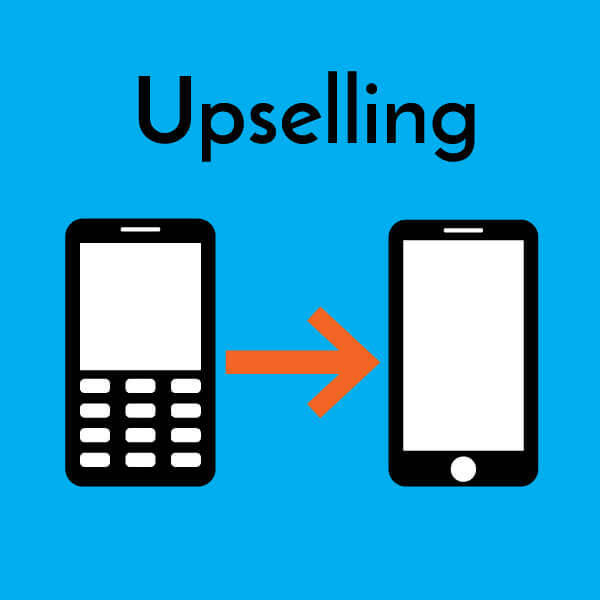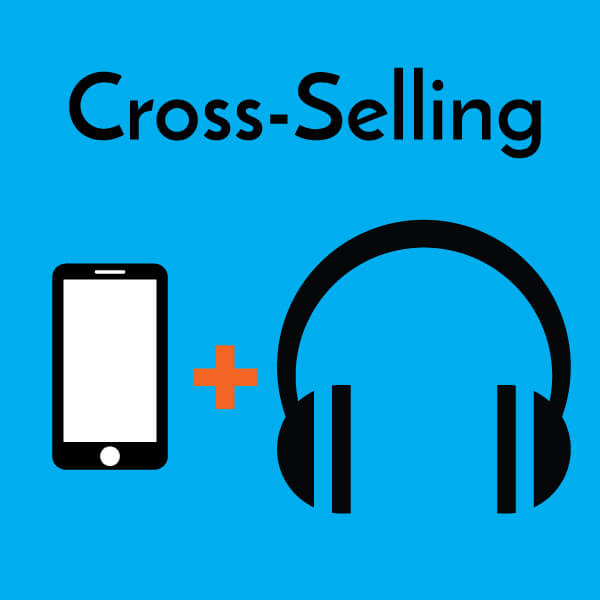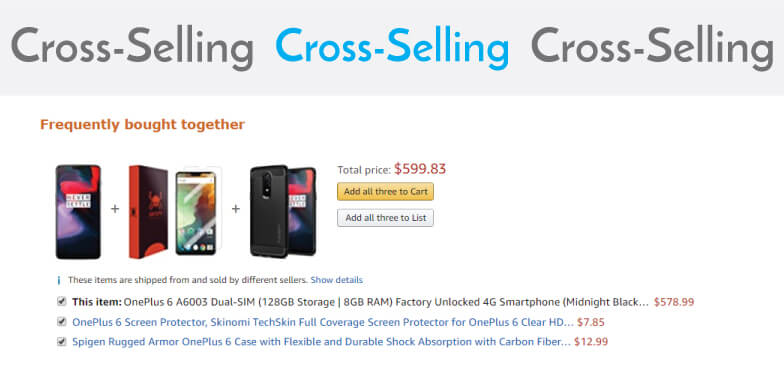Whether we’re talking about a B2B store or a B2C store, it’s important to know why do we need to use upselling and cross-selling. We need to know why we should use them and what’s the difference between them.
Upselling and cross-selling are not just marketing tactics that are meant to improve your sales. You will also get a better deal. By using them in a proper way, you can also help your customers to choose products more efficiently. This way you offer a pleasant experience to your clients. You will help them in the process of buying and you will also get a higher profit. Yes, customer experience is involved – meaningful recommendations are ok, meaningless recommendations are a little disturbing.
What you can get if you implement upselling and cross-selling strategies correctly:
- you can increase the number of products sold per order;
- increase the average order value placed in your store;
- improve the conversion rate;
- you can get more satisfied customers;
Sounds good, right? Let’s talk about them step by step:
Upsell or Cross-sell? What are the differences?
Let’s analyze and see what upsells and cross-sells mean. What are the differences between these two tactics when we want to promote more products?
What is upselling?
Clients are encouraged through upselling to buy a more expensive product than the one they originally chose. The product recommended by upselling on the online store is most likely a better and more expensive product. Yet, it still has all the characteristics of the product that was originally chosen by the customer.

For example, if the customer searches for a phone and the upselling recommendation shows a newer, more expensive model but still has some common key features, it’s likely that the recommendation will please the customer. For example, if a customer is searching for an Android phone, perhaps a wise choice is to show to your client a phone based on Android (to the detriment of an iOS phone), but with more memory or other features that are superior to the first phone model.
What is cross-selling?
Unlike upselling, cross-selling has the role of identifying and displaying products that match with the originally product chosen by the client. You’ve probably seen on some online stores “other customers have also bought …” on the product page or during the order process – usually in the shopping cart or on the checkout page for platforms that have a one page checkout process.

If we go back to the example with the phone, in the case of cross-selling there will be shown products such as wireless charger, selfie stick, headphones and so on. In short, it suggests to the customer an additional product, or more, but which matches the product chosen by the client in an attempt to make the customer to spend more. And guess what: it usually works, because it makes sense. Many of us need a phone case or headphones for our new phone.
What’s the big difference between upselling and cross-selling?
The biggest difference is that upselling is trying to replace the originally product chosen with a better and more expensive product. Cross-selling is trying to sell products that match with the originally product chosen by the customer.

Also, cross-selling is when we present the option to buy the product together with an extra option or feature (extra options of the chosen product). For example, a bigger guarantee for the phone, or the possibility to buy a certain case for that phone. I have written a certain case, because you set up the auxiliary product. You choose the phone case and the customer has the option of buying the case or not. It’s a very good marketing tactic, especially if you’ve got a couple of phone cases at a very good price and you want to sell them faster. In short, it is a configurable bundle, but where an auxiliary product is cheaper than the original product, and where the customer can choose whether to buy it or to buy just the original product. It’s different than a bundle product where you choose two or three independent products from your online store, combine them and sell them as a package, making it a steady bundle product.
How do you choose products for upselling or cross-selling on your online store?
If you already have a store for a few years, you get the answer to this question right from your customers.
To be more precise, from customer segmentation that was made based on different analysis such as from their behavior when they relate with your shop, from the ‘customer persona’ profiles, from their shopping carts, from the internal and external data you already have or you should have. If you don’t have this type of data already or you have not already made statistics, now it’s the time to start. If you have all the data you should contact the marketing company that you are working with. Why? In order to give you a clear analysis and to do your marketing based on real statistics. Here it comes in handy all the interactions your customers have with your company. We refer here both at the online store and social networks, and even with physical stores, if there are any. For such an analysis, you need to talk transparently with the marketing team.
Why do we need data when we talk about upsells and cross-sells?
You need this data if you want to give your customers exactly what they need and not just to try to force the sale of products that your customers don’t need. Those products will not be bought and you will not have a sales increase. You can even risk pissing off your clients if you insist on selling products that do not meet their financial needs or opportunities. The visitors of your store are not as misguided as you are tempted to believe. Don’t forget that you are most likely a client of other stores too.
How can you give the right solutions to your clients?
To make it easier to understand, we will retake the example with the phone.
When we talk about upselling, you can look at the data that you have about your customers and you will see there what they want and how much they are willing to spend on the order and on a phone, preferably on segments grouped by certain criteria (such as age). If on average, a customer segment spends on a phone 1,000 euro there should be displayed on the online store, for example, six or more phones that are priced a little more than 1,000 euro. You should still take into account the budget limit. In general, you should show products that are up to 30% more expensive than the price of the product that was originally chosen. If the search is for a phone that is up to 1,000 euro, you shouldn’t display six options at 2,000 euro, because the requirements of that segment of customers are not met. We talk about fairly common examples because every online store has its own statistics on which these cross-sell segmentations are based.

Let’s also talk about cross-selling on the same example. We go back to the data that you have about your store and, for example, you can look at the shopping carts and at the orders that have been placed. Analyze what was most often bought with a mobile phone and display those products. For example, if with a phone, 6 out of 10 customers also bought a car charger for the phone, you should display the car charger. When this happens give a small discount to the second product or to the entire bundle. This gives you real chances to increase sales on this product bundle.

Take it one step further – statistics and analysis
If you want to go further, then start segmenting your clients by groups and profiles or avatars. Then you can use statistics. For example: most customers between 18 and 25 years have bought a selfie stick with the phone. Be careful when you are associating products and consider the fact that the product you want to sell with the product chosen by the customer shouldn’t be more expensive than the main product.
What if you are a new company and you have just opened an online store? You don’t have the statistics listed above. But you can study the competition and you can put yourself in your customers shoes and think about what products they would like to see and buy from your online store. If you already have an online store for a while now, you can also do this.
Win-win situation
Using upselling and cross-selling strategies you can display products that your online store customers didn’t know you have. It is a win-win situation for you and your clients. Obviously, when the strategies are correct and make sense. Don’t bet on the ability or the patience of customers to look for the right product for them. If you are patient enough to look for that product in a store, you’ll be surprised how quickly some customers can go back on Google and start to search the products at your competition.
Try to choose what’s best for your store and find out which of these two strategies works better. At first you should try to display just one of them on the product page. In some stores, depending on the niche and their customers, it can become tedious or annoying for customers if the both strategies are applied at the same time and on the same page. If you have segmented groups of clients, you can choose to show upsells to one group and cross-sells to the other group. It is best to test it until you get the right formula for your company.
You shouldn’t use cross-selling and upselling strategies only on your online store.
Custom emails
Using the available data about your customers that are subscribers too, you can segment them so that you can provide newsletters with much more suitable deals for them. Most email marketing platforms support various automations and have functions that can help you increase sales by email. Email marketing is not dead! Not yet.
Interesting examples:
- an authenticated customer has added 2 products to the cart. 24 hours passed and did not place the order. Send an email with a small gift for that customer if you can. A 5% voucher might be just what it takes to make the sale happen;
- send the above customer an e-mail with some more expensive options that are on promo-upselling;
- a customer bought a phone 30 days ago. Does he know that you also offer cases? Be sure that your customer finds that out; (Cross-selling)
- a customer received 7 days ago the purchased product. Ask him to leave a review. Recompensate the purchase and the review with a voucher. He or she may still place another order if the voucher expires in 6 months. Plus, you have a real chance to get a real opinion about that product and the services offered by the store;
Clients support by phone or live chat with clients
If your customers want to order a product by phone, you can start thinking about how you can apply the upselling or cross-selling strategy on this case. When you or your employee discuss with the final customer, you can ask for more details and as in the online environment, you can also offer more expensive options – upsells – or products that work together with the main product.
For example, your employee can inform the customers that they can buy a selfie stick with the mobile phone if they want one or need one. It’s not an “aggressive” marketing tactic. It is possible that the customer doesn’t know that you are selling selfie sticks. Or maybe your customer didn’t think about buying one and now it seems to be a good idea. If you know your products, that does not mean that every visitor who seen your online store knows every existing product that you have. Keep the same principle I have stated above. The auxiliary product has to be cheaper than the product desired by the customer.
Reward your customers
If your cross-selling and upselling strategy worked, don’t forget to reward your customers when they placed an order. Whether you choose to give them a gift voucher or a discount on the next order or even send them a small gift with the order placed by them – by returning to the example with the phone, you can send them cleaning napkins or a microfiber cloth with your brand logo or even a phone display cleaner kit. Choose something that is not too expensive so it wouldn’t affect your profit. Your customers will definitely appreciate and most probably they will become loyal customers because you showed them how important are them for your company.
When we talk about phone support or live chat, the tone of the discussion matters a lot. I know that sometimes everybody has a bad day. Yet you should try, however, to be at your best with the clients. Kindness will be always rewarded.
If you inform your customer nicely that the mobile phone that he wants is also part of a bundle promotion in which he receives a phone charger with 15% cheaper than the initial price of the phone charger when it’s not bought together with the mobile phone, your customer might see that it’s a good deal. You must respect and speak nicely with customers, regardless of the nature of their problems (sales, support, warranties, returns, etc.). Often the intention or the desire to actually help the customer makes more than the actual sale. This way the new client becomes a loyal customer and the customer will order more often. And usually, loyal customers give out referrals or recommend their favorite stores to their acquaintances.
Conclusions
By using upselling and cross-selling you have some great advantages because you can increase your business profit but you can also increase the variety of the products that you sell. In addition, you help your customers to discover the products they are interested in and make the best choice for them. Applying these sales strategies thoughtfully and helping your customers to choose the right products, you can easily increase your profitability directly and also to increase your customer satisfaction.
And don’t forget, whatever it is, you should always study and update your analysis and statistics. Applying these strategies as you study concrete data, you will increase your success rate considerably. Practically you will eliminate a lot of question marks. For example: you shouldn’t choose the phone cases that you like for cross-selling. Display the phone cases that are searched and bought by customers.
If you enjoyed this article, don’t forget to share it.
